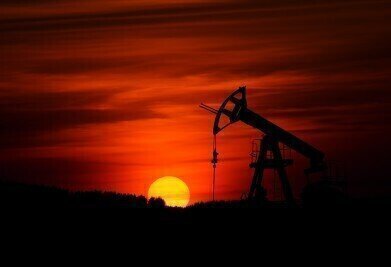Fuel for Thought
A Closer Look at the Lifetime of an Oil Well – from Beginning to End
Mar 27 2015
Petroleum oil and hydrocarbons are two of the most valuable resources on the planet, used to power everything from cars and planes to factories and industrial plants. Yet despite their inherent importance in day-to-day life, very few people know what goes on during the life of an oil well. So to clear up the confusion about these seriously important global assets we’ve put together a lowdown of an oil well’s lifespan, from start to finish!
Five key segments
We’ll start off as simply as possible. In general, the life of most oil wells can be classified into five major segments:
- Planning
- Drilling
- Completion
- Production
- Abandonment
Want to know more? Read on for a closer look at what goes on in each stage…
Planning
Initial planning phases are an important part of any oil well project. Here, managers explore a range of different factors that will determine how the project pans out.
Drilling
To kick operations off a 12cm to 1 meter in diameter hole is created using a rotating drilling rig. Steel pipe is then placed in the hole to provide support and structural integrity. The steel casing is also used to isolate high pressure zones and prevent them from mixing with other zones, or the surface of the well. After initial set-up has been completed the rig can start to drill deeper. The support means that drilling can then be carried out in deeper, more unstable and potentially dangerous formations. Often wells will have up to five sets of smaller holes drilled inside each other, each supported with steel pipe and cement.
For more information, read: How Far Do We Drill to Find Oil?
Completion
During the completion process the well is prepared for the production of oil or gas. In cased hole completion projects small holes are punctured into the steel casing which allow oil to flow from its original source into the production tubing. Open hole completion sees ‘gravel packs’ or ‘sand screens’ which are placed I the final uncased reservoir to offer structure and support without jeopardising flow from the reservoir to the bore.
Production
During the production stage the well actively harvests oil and gas. Drilling equipment has been moved and replaced with valves which regulate pressure, control flow and give workers access to the wellbore. The main outlet valve I used to connect the well to a distribution network and transport it through tanks and pipelines. This allows the oil and gas to reach refineries, oil export terminals, natural gas compressor stations and other buyers.
Abandonment
When an oil well reaches its economic limit production ceases and the project is abandoned. This occurs when the maximum production rate efficiency of a well no longer covers its overhead expenses. Cue shutdown and the end of the oil well’s life! For more information, read how the ultimate recovery of an oil well is estimated.
Digital Edition
PIN 25.2 Apr/May
April 2024
In this Edition Safety - Carbon monoxide toxic and flammable gas detection Analytical Instrumentation - Density: A fundamental parameter at critical stages within the petroleum sector...
View all digital editions
Events
May 05 2024 Seville, Spain
May 06 2024 Riyadh, Saudi Arabia
May 06 2024 Houston, Tx, USA
May 06 2024 Houston, Tx, USA
Canada Gas & LNG Exhibition & Conference
May 07 2024 Vancouver, BC, Canada


















